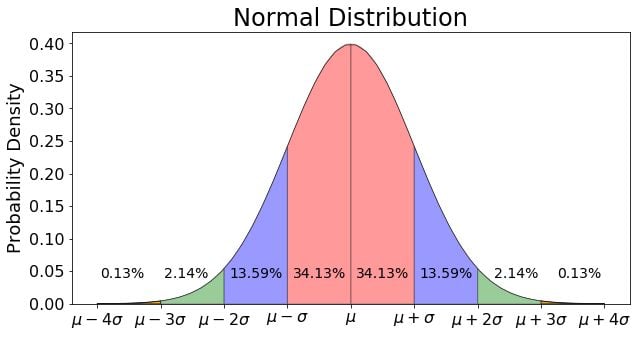


standard_dev is the standard deviation of the distribution.NORM.DIST(x, mean, standard_dev, cumulative) In Excel, we can easily answer this question by using the function = NORM.DIST(), which takes the following arguments: 99.7% of the data falls between 85 and 115įinding What Percentage of Data Falls Between Certain ValuesĪnother question you might have is: What percentage of data falls between certain values?įor example, suppose you have a normally-distributed dataset with a mean of 100, a standard deviation of 5, and you want to know what percentage of the data falls between the values 99 and 105.95% of the data falls between 90 and 110.68% of the data falls between 95 and 105.
#Empirical rule percentages in excel how to
99.7% of the data falls between 28.75 and 51.25Īnd here is one more example of how to apply the Empirical Rule to a dataset with a mean of 100 and a standard deviation of 5:.95% of the data falls between 32.5 and 47.5.68% of the data falls between 36.25 and 43.75.For example, here is how to apply the Empirical Rule to a dataset with a mean of 40 and a standard deviation of 3.75: To apply the Empirical Rule to a different dataset, we simply need to change the mean and standard deviation in cells C2 and C3. The cells in columns F and G show the formulas that were used to find these values. 99.7% of the data falls between 0.4 and 13.6.95% of the data falls between 2.6 and 11.4.68% of the data falls between 4.8 and 9.2.The following screenshot shows how to apply the Empirical Rule to this dataset in Excel to find which values 68% of the data falls between, which values 95% of the data falls between, and which values 99.7% of the data falls between: Suppose we have a normally-distributed dataset with a mean of 7 and a standard deviation of 2.2. In this tutorial, we explain how to apply the Empirical Rule in Excel to a given dataset. 99.7% of data values fall within three standard deviations of the mean.95% of data values fall within two standard deviations of the mean.68% of data values fall within one standard deviation of the mean.Share on GitHub.The Empirical Rule, sometimes called the 68-95-99.7 rule, states that for a given dataset with a normal distribution: ✨Build a portfolio - Create data analysis projects using real-world datasets to demonstrate skills. ✨Try machine learning techniques - Regression, classification algorithms like random forests and k-means provide valuable experience. ✨Learn Python or R - These programming languages are ideal for importing, cleaning, transforming, merging and analyzing data at scale. ✨Understand statistics - Grasp statistical concepts like distributions, statistical significance, regression analysis and sampling. Learn Tableau, Power BI and data visualization principles. ✨Visualize data effectively - Create compelling charts, graphs, dashboards and reports to convey insights. Key skills include JOINs, aggregate functions, date functions, CASE statements, and more. ✨Learn SQL fundamentals - SQL allows analysts to access, manipulate and analyze data stored in databases. Excel is a data analyst’s bread and butter. Here are 7 bullet points summarizing a data analyst roadmap: ✨Master Excel - Become an expert in formulas, functions, pivot tables, pivot charts, conditional formatting, data validation and more.


 0 kommentar(er)
0 kommentar(er)
